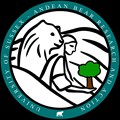Story
"Please look after this bear"
The label tied to Paddington’s coat was enough to have him adopted by a caring family. But what about his real cousins high in the Andean mountains? Andean, or Spectacled bears – named after their distinctive facial markings – have long lived a gentle life, bumbling between lush forest and mountainous scrub, following the flowing and fruiting cycles of their favourite foods. Perhaps marmalade sandwiches are a bit of a stretch. But they will trek miles, and scale the most perilously slender of branches, to reach wild avocados, berries, palm hearts and bromeliads. These small, lovable, bears, really are the stuff of children’s stories.
The problem
However, their life is changing at an alarming rate. Deforestation rates in the Andes are among the highest on the planet, with land being cleared to make way for farming. Not only does this mean they are losing their homes and food, but it brings the animals increasingly into conflict with people. What can be more irresistible to a sweet-toothed bear than a field of ripe maize or, even better, sugar cane? There are also reports of these naturally vegetarian bears – they are only distantly related to all other bears and do not usually share their carnivorous tendencies – taking livestock. Bad news indeed for the small-scale farmer who has saved up to buy a few cows, hoping for an income from something a little less back-breaking than harvesting sugar on slopes of 45°. So, despite the official legal protection of the bear, they are regularly shot.
What we are doing about it
Our team from the University of Sussex is working with the Ecuadorian Charity Fundación Cambugan, to try to identify sustainable futures for the bears, their habitat, and people.
Working in the Paso Alto region, part of the Andean Bear Corridor (a 250 mile stretch along the spine of the Andes, running between Ecuador and Peru), we focus on communities at the edge of Protected Forest areas. Our network of 15 camera traps in identified more than 16 individual bears within the first few months of the project, including cubs, confirming the vital importance of this region to the population. We have therefore doubled the number of cameras, and hope to double it again within the next 12 months.
We began with exploring vanilla production in forests, as an alternative to clearing natural vegetation for farming. Vanilla is native to Ecuador and Peru, and is quite literally worth its weight in gold. We are also exploring the other resources that forests might offer local people, for example as medicines or building material, as well as measuring its benefits to the world generally, as a carbon store, and as a biodiversity mega-hotspot.
There may also be legal processes that could help. Many local people lack the legal title to the land they live on. We are therefore working with local communities and lawyers to develop land title cases to present to the government ministries. This should help to protect the Andean Bear since the Environmental Ministry of Ecuador requires a landowners to agree to restoring 60% of the landcover to forest as part of the land-title agreement.
Finally, Ecuador is unusual in having the Rights of Nature formally recognised within its constitution, so we are exploring the potential for this legal framework to protect both the Andean Bear and its habitats.
How you can help
We urgently need more funding to support our work. Specifically, we want to:
1. Expand our camera trap network (1 camera ~£200)
2. Train and employ local people to analyse the camera trap data (2 months for one person ~£1,000);
3. Perform genetic analysis on livestock killed by predators to identify whether bears or other species are involved (local people have already begun collecting swabs from dead livestock) (£50 per sample)
4. Hold workshops with local people to identify the value and uses of native trees and plants and explore opportunities to expand their use (1 workshop ~£400 including refreshments and transport for local remote communities);
5. Buy electric fencing and undertake an assessment of the practicality of its deployment in the very challenging conditions of the Andes; (1 unit including battery, solar panel ~£500)
6. Buy alpacas and trial them as a replacement for cattle, monitoring their impact on biodiversity and resilience to attack from carnivores; (1 alpaca ~£500)
7. Secure key pieces of land, at the edge of Protected Forest, from agriculture and deforestation (1ha ~£4,000).
Your donation will make a difference
All donations, large and small, will help to drive forward this important work.
 Campaign by
Campaign by 